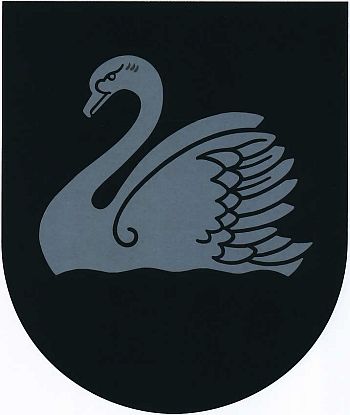Gulbene (town): Difference between revisions
Knorrepoes (talk | contribs) No edit summary |
Knorrepoes (talk | contribs) m (Text replacement - "{|width="100%" style="color:black; background-color:#ffffcc;" |width="15%"|50 px|left |width="70%" align="center" |'''Heraldry of the World<br/>Civic heraldry of Latvia - Latvias ģerboņi/Latvijas heraldika ''' |width="15%"|50 px|right |}<seo title="ģerboņis, heraldika" /> " to "{{latvia}}") |
||
| Line 1: | Line 1: | ||
{ | {{latvia}} | ||
''' GULBENE TOWN''' | ''' GULBENE TOWN''' | ||
Revision as of 04:51, 12 July 2015
Template:Latvia GULBENE TOWN
Region : Vidzeme
Municipality : Gulbene
Official blazon
Melnā laukā peldošs sudraba gulbis.
Origin/meaning
The arms were granted in 1938.
Gulbene, called then Gulbana, was initially a castle in the Talava land of the Latgali people. The name comes from "gulbe" ("swan"). After the conquest of Latgale this land was transferred to the archbishop of Riga, which built his castle Schwanenburg in 1340. But Gulbene did not develop to a town and remained only a manor.
In 1903 the narrow-gauge railway Plavinas-Valka was built, and it stimulated the development of town, especially when the other railway Ierike-Abrene was built, and both railways crossed at Gulbene.
In 1928 city rights were granted and the canting arms were granted in 1938.
Contact and Support
Partners:
Your logo here ?
Contact us
© since 1995, Heraldry of the World, Ralf Hartemink 
Index of the site
Literature : Latvias ģerboņi, 2008










